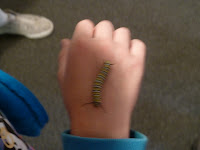Aunt Barbara Berberich took Ashley and I on a sightseeing tour of Paterson, NJ.
We walked to the Great Falls after touring the Paterson Museum. The falls are quite magnificent. It had rained a lot earlier in the week, so the falls were gushing with water. Upon hearing the roar of the water (which sounded like a stampede of horses), it is easy to imagine why people harness its power. At 77 feet tall, it is the second highest waterfall on the East Coast (Niagara Falls is the highest).
The falls look great from many different angles, but my favorite was from walking across a suspension bridge. Yes, I was glad Ashley is old enough that I did not have to worry about her going over the edge of the bridge. And yes, I was a bit nervous as the bridge swayed, but the views made up for my discomfort.
The town of Paterson is the first planned industrial city in the United States. George Washington sent Alexander Hamilton to scout for the best location. When Hamilton found the falls, he felt Paterson was it.
In the center of the falls is a rock formation that sort of looks like an Indian Chief's head. My mom said he has a name, but my limited research did not find details about it.
In 1970, the area surrounding the falls was declared a National Historic Landmark District. In 2004, the Great Falls were designated a New Jersey State Park. Since then the 35 acres around the park been designated a National Historic Park.
It is in the city of Paterson, but we did not feel threatened or uncomfortable with our surroundings. There were enough other people doing exactly what we did.

































